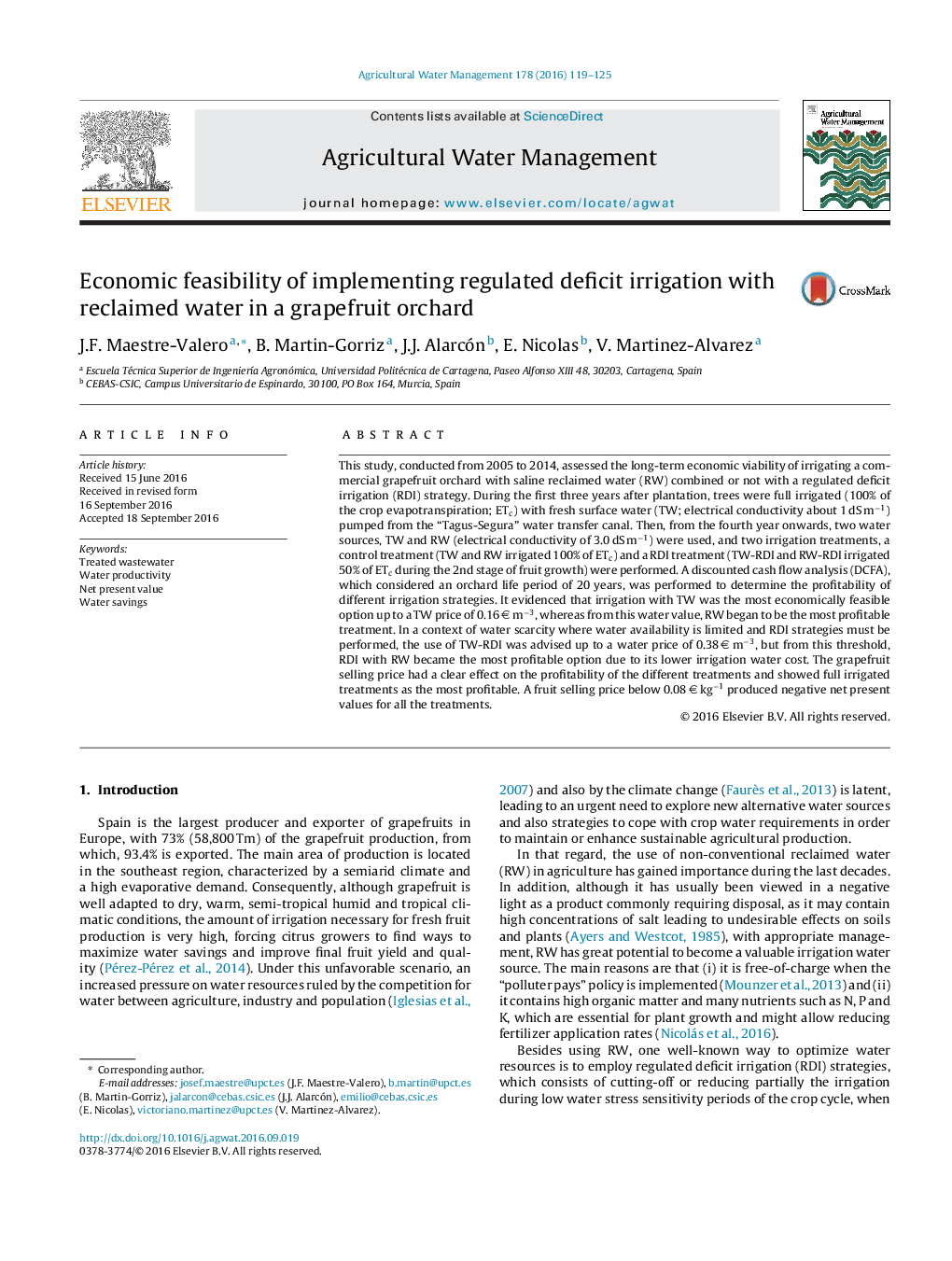| Article ID | Journal | Published Year | Pages | File Type |
|---|---|---|---|---|
| 6363320 | Agricultural Water Management | 2016 | 7 Pages |
Abstract
This study, conducted from 2005 to 2014, assessed the long-term economic viability of irrigating a commercial grapefruit orchard with saline reclaimed water (RW) combined or not with a regulated deficit irrigation (RDI) strategy. During the first three years after plantation, trees were full irrigated (100% of the crop evapotranspiration; ETc) with fresh surface water (TW; electrical conductivity about 1 dS mâ1) pumped from the “Tagus-Segura” water transfer canal. Then, from the fourth year onwards, two water sources, TW and RW (electrical conductivity of 3.0 dS mâ1) were used, and two irrigation treatments, a control treatment (TW and RW irrigated 100% of ETc) and a RDI treatment (TW-RDI and RW-RDI irrigated 50% of ETc during the 2nd stage of fruit growth) were performed. A discounted cash flow analysis (DCFA), which considered an orchard life period of 20 years, was performed to determine the profitability of different irrigation strategies. It evidenced that irrigation with TW was the most economically feasible option up to a TW price of 0.16 â¬Â mâ3, whereas from this water value, RW began to be the most profitable treatment. In a context of water scarcity where water availability is limited and RDI strategies must be performed, the use of TW-RDI was advised up to a water price of 0.38 â¬Â mâ3, but from this threshold, RDI with RW became the most profitable option due to its lower irrigation water cost. The grapefruit selling price had a clear effect on the profitability of the different treatments and showed full irrigated treatments as the most profitable. A fruit selling price below 0.08 â¬Â kgâ1 produced negative net present values for all the treatments.
Related Topics
Life Sciences
Agricultural and Biological Sciences
Agronomy and Crop Science
Authors
J.F. Maestre-Valero, B. Martin-Gorriz, J.J. Alarcón, E. Nicolas, V. Martinez-Alvarez,
